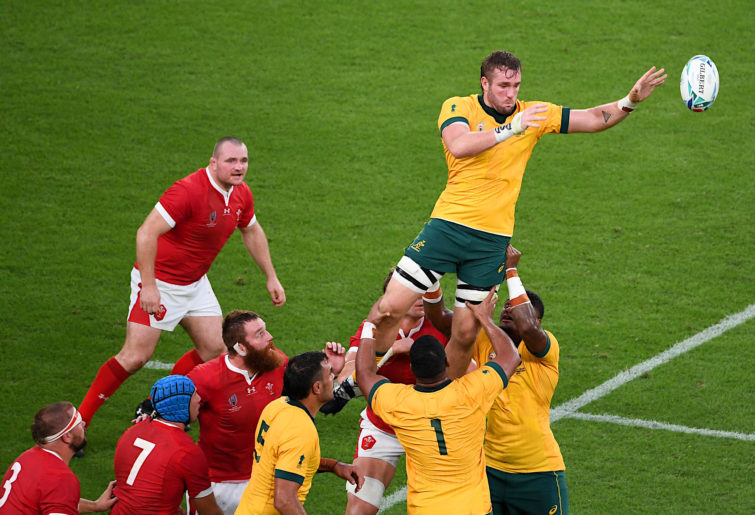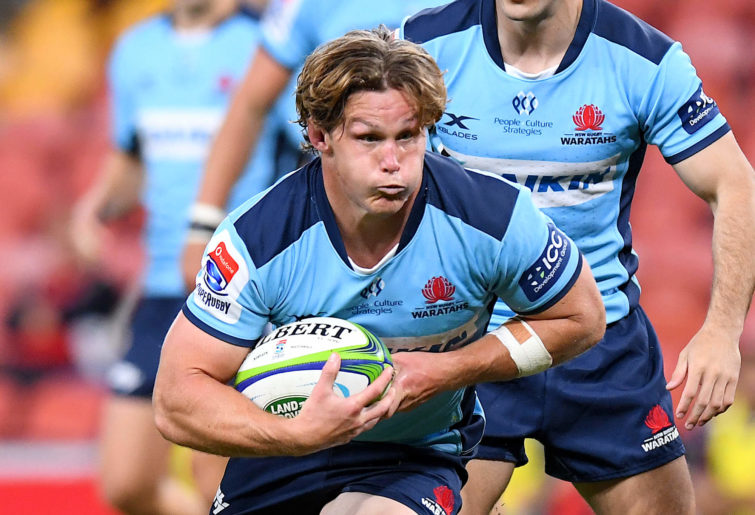Last week, in part-one, we looked at the wide-ranging responsibilities of a captain, how these have historically been ill-defined, and how informal and formal leadership groups have become en-vogue, so as to spread the load, and to better prepare future captains.
We also highlighted the blurred line between captaincy and leadership.
This series of two articles is the combined work of myself and ex-Sydney University and Oxford University captain, and Australian sevens representative, David Kelaher, who now resides in France. We also acknowledge the assistance of Brendon Shields from Rugbycology, and thank him for allowing us to use his statistics.
It is clear that there is far more to captaincy than decision-making during a match, just as it is also clear that some decisions that are attributed to captains are actually determined beforehand by the coaching staff, or made in the run of play by the team’s playmakers.
Nevertheless, in the best Westminster tradition, all captains take on the role knowing that they are judged on results and that the buck stops with them.
Given the Wallabies’ underwhelming results in 2020 (one win and two draws from six matches), and their tendency to turn down kickable shots for goal from penalties, are we able to link those two things together and, furthermore, are we able to do so in a way which fairly assesses the capability of Michael Hooper as Wallabies captain?
Here’s some key data from the Wallabies’ 2020 six-match campaign.
62 percent of all penalties received in the attacking half were kicked to touch. 38 percent were kicked for goal, scrummed or tapped.
Of the penalties kicked for touch, an attacking lineout in the opposition 22 was set up 4.67 times per game (total 28 attempts). The total return on average was 1.17 points per game (total 7 points).
In other words, just 3.6 percent of all lineouts in the opposition 22 were converted into points.
One does not need to be a statistician nor a professional rugby analyst to understand what a poor return this is. In five of the matches played, just one successful penalty goal would have delivered a superior outcome. In the other match, three penalty goals would have been a better result.
Broadening the sample size, when the data for the Wallabies is combined with the five Australian franchises competing in Super Rugby Trans-Tasman this year, it can be determined that, when kicking to touch from a penalty in the attacking half, Australian sides have a 16 percent chance of scoring from a lineout in the attacking 22, at an average of 5.3 points per score (most tries are scored wide out and many are unconverted).
For this sample, based on the number of platforms set up, Australian sides score once per game from an attacking lineout. If they were to slot just two penalties, without kicking for touch at all, they would earn more points than the 5.3 average.
There are a number of variables to consider, before passing any judgment. One is the danger of accumulating data in a single match, and extrapolating this into assumptions that a single different action or decision would result in a different overall outcome.
For example, penalties often come in clusters, and when you hear commentators complain that the Wallabies have turned down four penalty shots at goal, this does not take into account that had they kicked the first one, the course of the game would have changed, and they may not have been in position to receive the next three.
Other variables include the success rates of the goalkickers and the likelihood that penalty shots will in fact result in points. The ability of the hooker to hit the target cleanly is another.
Treat lineout statistics with caution. When a side is shown to have won 100 percent of their lineouts, consider how many of those lineout wins were fast, clean and efficient, and allowed an attacking maul to be set to advantage.
What about the ability of the kicker to find touch five metres from the try-line, instead of ten or fifteen metres? The chances of converting a lineout maul drive to a try diminish markedly with each few metres.
Another muddying factor is that not all tries are scored directly from the lineout. Should these situations be considered a ‘fail’ if pressure on the try-line is maintained, and an opposition player is yellow-carded, or a try is scored soon afterwards?

(William West/AFP/Getty Images)
The Brumbies for example, are Australia’s most proficient side from lineouts in the attacking 22, converting 29 percent of those plays to return 7 points per match versus the Wallabies 1.7 points per match. It is interesting to note that, compared to New Zealand sides, the Brumbies have to play an additional 2.25 rucks before scoring.
One of the reasons is that this year, the Brumbies introduced more lineout variations; running plays instead of maul drives.
This was a response to sides understanding their maul drive threat and putting more time into defending that, opposition coaches imploring referees to look more closely at how they set their blocks, and how they go about restarting the maul after an initial stall, while also being a tactic to try to catch the opposition off guard.
For those interested in a comparison, the Crusaders sit on 47 percent conversion. The average across the All Blacks and New Zealand franchises for the same period is 9.7 points per match, versus 5.3 for Australian sides.
The quality and nature of the opposition is another key input. Some sides defend the lineout maul drive better than others. Other sides defend their line well, while some sides are more prone to persistent offending, and give away yellow cards in doing so.
It’s a similar story when it comes to referees. Coaches know exactly which referees are more prone to reward the attacking side with repeated penalties and hand out yellow cards, should they be able to set a solid maul and get it moving forward.
All of these factors, when weighed with the attacking side’s proficiency at lineout and maul, must be somehow fed into the equation, in an effort to try to arrive at a set of informed decisions, that set the odds in the attacking team’s favour.
So, what about the Wallabies and the process they employ? In a chat earlier this season with coach Dave Rennie, he explained how preparation for each Test match incorporates analysis of all of the factors listed above by the coaching staff and leadership group, before a plan for the next match is agreed upon.
“Taking into account the specific opposition, how we’ve come out of the last match, and how we’ve been training, we might decide on a general approach of keeping the pressure on territorially, or in other cases, taking the points and applying scoreboard pressure,” he explained.
“In that sense, the captain doesn’t necessarily make all of those decisions.”
“From time to time there might be things we notice about the opposition defence, or we feel it’s an important time to hit the scoreboard, so we’ll get messages out to the team. Sometimes that might include having the runner sprint out with the tee,” Rennie explains.
Clearly, in the heat of a match, there is a requirement for coaches and players alike to remain flexible.
Most of the strategy setting will be done off the field, but once the match is underway, the captain must be astute, aware and nimble enough to take direction from the coaches’ box on some occasions, while at other times, make decisions that take into account all of the factors mentioned above, in the context of how the match is playing out.
“We always respect the ability of the captain and leaders to assess how things are on the field, and we back them to make a decision either way. The important thing is that in our post-match assessment, we work through the reasoning behind those decisions, and try to ensure we learn from them,” Rennie concludes.
Given the 3.6 percent success ratio across 2020’s Test matches, one imagines those post-season discussions will have been straightforward. Plainly, the Wallabies have two options; abandon the propensity to kick for touch, or get better at converting attacking lineouts into points.
The appointment of Brumbies coach Dan McKellar as Wallabies forwards coach suggests they will pursue the latter. On Thursday, I asked McKellar whether in terms of decision making around penalties in the attacking 22, are we likely to see a continuation of attempting to score tries, or is there going to be a more nuanced approach this year?
“No, whenever we get to the 22 we’re going to want to score tries,” he answered. “Conversion in the ‘A-zone’ is always linked to a winning outcome.”
Note too how Feleti Kaitu’u and Lachlan Lonergan have been introduced as hookers, this year. How much has the requirement for better throwing accuracy played a role in their selection?
With the focus on conversion, McKellar explained how well the non-Brumbies in the squad have adapted to what is for them a new approach, and hinted at what fans might expect to see. “I’m well across what a good maul can do, not only for the forward pack, but for the backline. It can create a lot of one-on-one opportunities, and allow you to be a little bit innovative with it as well.”

(Photo by Kai Schwoerer/Getty Images)
All of this should be food for thought next time Michael Hooper points to the sideline. What might appear to be a decision made on impulse, is anything but.
Consider too, Australia’s most recent success in Super Rugby, the 2014 final, where the Waratahs beat the Crusaders 33-32. In that match, the Waratahs scored only one try, with captain Hooper pointing to the posts eight times, for Bernard Foley to convert seven penalty attempts.
Perhaps instead of highlighting Hooper’s decision making as captain, a more relevant discussion might be had about the culture of Australian rugby. Is it possible that regardless of what the data tell us about outcomes, from schoolboy rugby to the elite level, kicking for the corner has become habitually accepted as ‘the way we play’?
In this season’s Super Rugby AU, the Rebels, under coach Dave Wessels and stand-in captain Matt Toomua, adopted a ‘take the points’ strategy. This was no accident. Looking at the Rebels modest lineout maul conversion rate from 2020, without his best lock and No 8, three backline players without any prior Super Rugby experience, Wessels simply read the data, did his sums, and chose to play the odds.
Matches against the Reds and Brumbies were lost by a kick, on the siren. Media and fan reaction was overwhelmingly scathing of the Rebels’ approach, with the assumption made that just a little more daring, and a single try, would have turned those losses into wins.
That’s an assumption that isn’t supported by facts. Indeed, the opposite is far more likely; given their historic conversion rate, if the Rebels hadn’t accumulated the points on offer, they would have lost by more.
What might now be considered ‘the Australian way’ has taken root, to some extent, elsewhere. Last weekend’s thrilling English Premiership final, won by Harlequins 40-38 over Exeter, featured 11 tries, with only one attempt at penalty goal in the whole match.

Michael Hooper (Photo by Bradley Kanaris/Getty Images)
For a number of reasons, the English competition has become increasingly entertaining and highly watchable. What will be fascinating to observe from here is how much of this style of play will be transposed into the national team, and if the emphasis on pursuing tries at the expense of penalty goals will become commonplace across the premiership.
On the other hand, in less than three weeks, world champions South Africa take on the Lions in a much anticipated three-match series. With a rugby history of pragmatism, and sharpshooter Handre Pollard at his disposal, which direction do you think Springbok captain Siya Kolisi will point, when his side receives a penalty in the attacking half?
Whatever happens elsewhere, perhaps the questions the current Wallabies should be asking are; based on the data, what are we good at, what is our opposition weak at, and what options have the highest probability of success?
Recent outcomes suggest that the Wallabies have determined what they’d like to be good at, as opposed to what they are actually good at. On Wednesday night, captain Michael Hooper gets an opportunity to show if they are on the right path or not.































































































